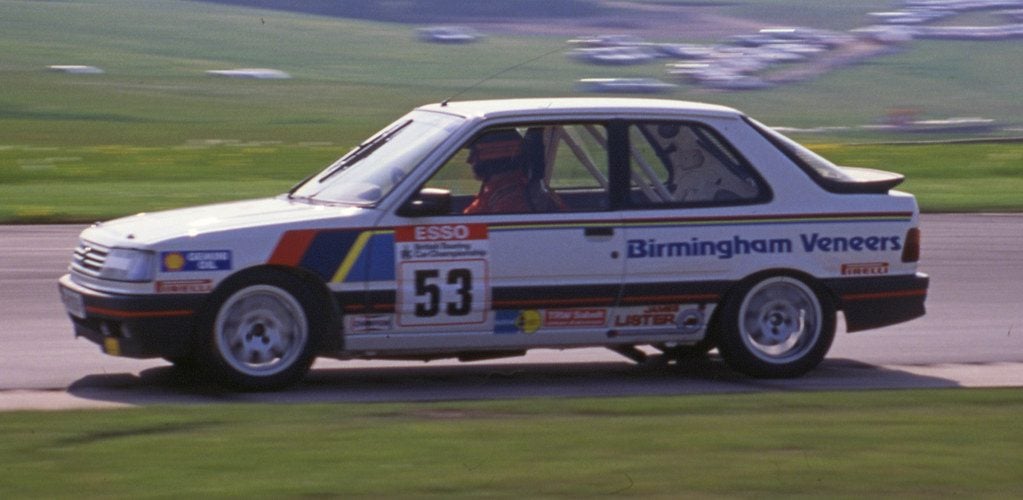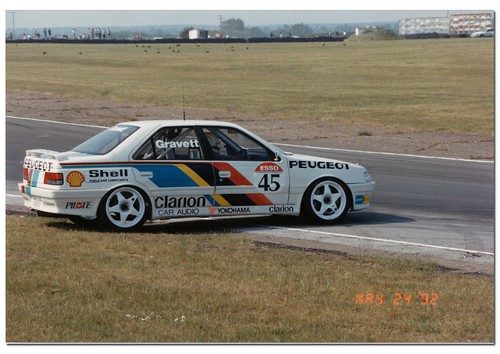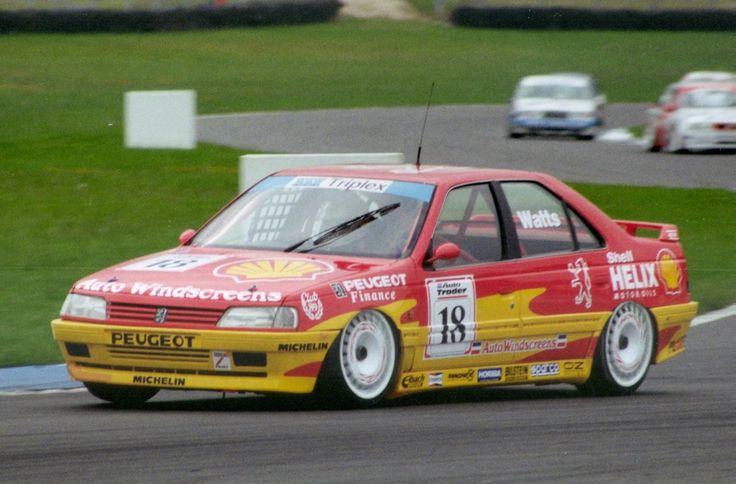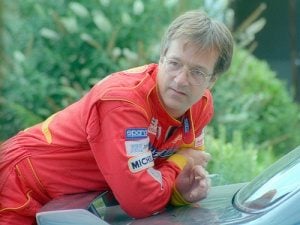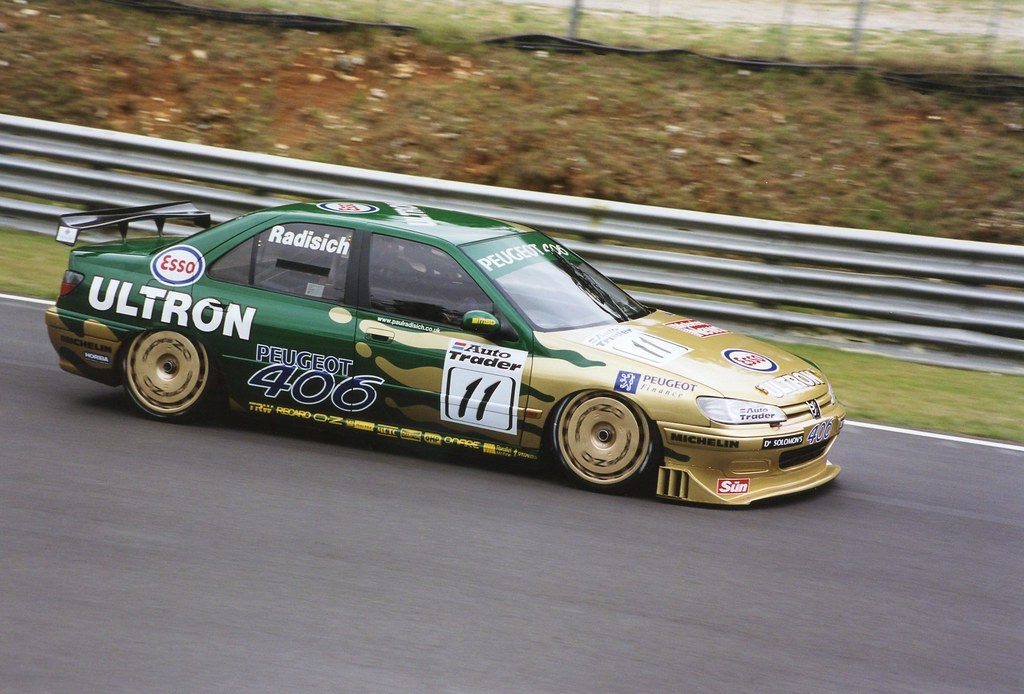Peugeot In The Supertouring BTCC
Some people might not know it but Peugeot first entered the BTCC during the Group A era. A younger Mike Jordan drove the Peugeot 309 in the often forgotten Class C (1601cc-2000cc). The only other 'competition' in that class was the previously dominant Volkswagen Golf and the occasional Honda Prelude. Peugeot entered in 1989 but was completely put aside by the Vauxhall Astra of John Cleland, which also debuted and went on to win the title that year.
There was no Peugeot entry during the transitional 1990 season.
1991 was the true start of the supertouring era. Privateer teams were not gone but teams such as Rouse Sport, Vic Lee Motorsport, Dave Cook Racing, Janspeed and Prodrive were instead running teams on behalf of manufacturers like Toyota, BMW, Vauxhall and Nissan, who became background underwriters to these now-serious factory efforts.
Peugeot declined to enter a factory team in 1991 but saw the potential of a serious entry into a series which would become the continent's best.
The new team for 1992 would be run by Mick Linford's motorsport outfit. Linford was responsible for all Peugeot Sport UK activity; British Touring Car Championship, the British Rally Championship and the one-make Peugeot Rally Cup. The tin-top team would use the hot model Peugeot 405 Mi16, a car with good exposure and notoriety in the UK thanks to a
"controversial" advert when it was launched in 1988.
The one-car effort was piloted by Robb Gravett, a top driver who could have gotten a decent drive at any other team; he was the 1990 champion and happy to get away from Ford after the Trackstar team went bankrupt due to a lack of funding. The 1991 Ford Sierra Sapphire was a failure worthy of its own article in this thread.
Gravett spins out at Snetterton
In a trying season, the team struggled to make the points with Gravett finishing in the points only twice. But this toe dip into the water would lead to a full, two-car assault for the 1993 season. Gravett was partnered by Eugene O'Brien and there was even a third Peugeot 405 for Ian Flux in a very background "semi-works" effort.
1993 was a better season for Peugeot; they made leaps and bounds against the other manufacturers similarly lacking in experience; Rover and Mitsubishi disappeared without a trace whereas Peugeot was competing with Nissan and Mazda in a "best of the rest" behind the big three of Vauxhall, Toyota and BMW. Gravett scored 34 points in this season compared to just 2 points the prior year, O'Brien scored 23 and Flux scored 14. Peugeot finished 6th in the manufacturers championship, just behind Nissan but ahead of both Renault and Mazda.
In 1994 Gravett left and was replaced by Patrick Watts, who had shown flashes of brilliance at Mazda and put in many strong drives throughout the year which included 4 podium finishes, good enough for 8th in the championship, Peugeot's best showing yet. Peugeot remained 6th in the manufacturers championship but the increasing number of manufacturers, it would only increase as the seasons went on, meant that the midfield battle was fast becoming a race of attrition and a panic scramble for the minor points.
Watts' four 3rd places ensured Peugeot were in touch with "the best of the rest"
1995 was the last year for the venerable 405 and the midfield battle became much more intense with Alfa Romeo, BMW and Toyota all slipping further and further behind, dropping into Peugeot's realm and the debuting Honda offering even more competition. Peugeot finished bottom of the manufacturer's championship and Watts just about held on to a top 10 championship position ahead of David Leslie on countback.
Patrick Watts
At this point, it is worth pointing out that although I described the 405 as "venerable" in the British series, this belies its success elsewhere; in Italy Fabrizio Giovanardi and Gary Ayles were regular race winners and podium gatherers with Giovanardi finishing 2nd (1994) and 3rd (1995) in the Superturismo Championship; in France Laurent Aiello won the 1994 French Touring Car Championship and was 3rd in 1995. Yet in Britain, in the series which was arguably seen and touted as "the best", Peugeot was struggling.
1996 brought a new car, new colours and new sponsors. Out went the 405 and in came the sleek 406, another car which gained a following thanks to
a memorable advert on British TV (this is the full, three-minute version; shorter ones were used more frequently). Out went Anglo-Dutch Shell and in came French Total to supply oil and lubricants. Out went the haphazard liveries and in came a much nicer, more striking red affair with blue and white trim.
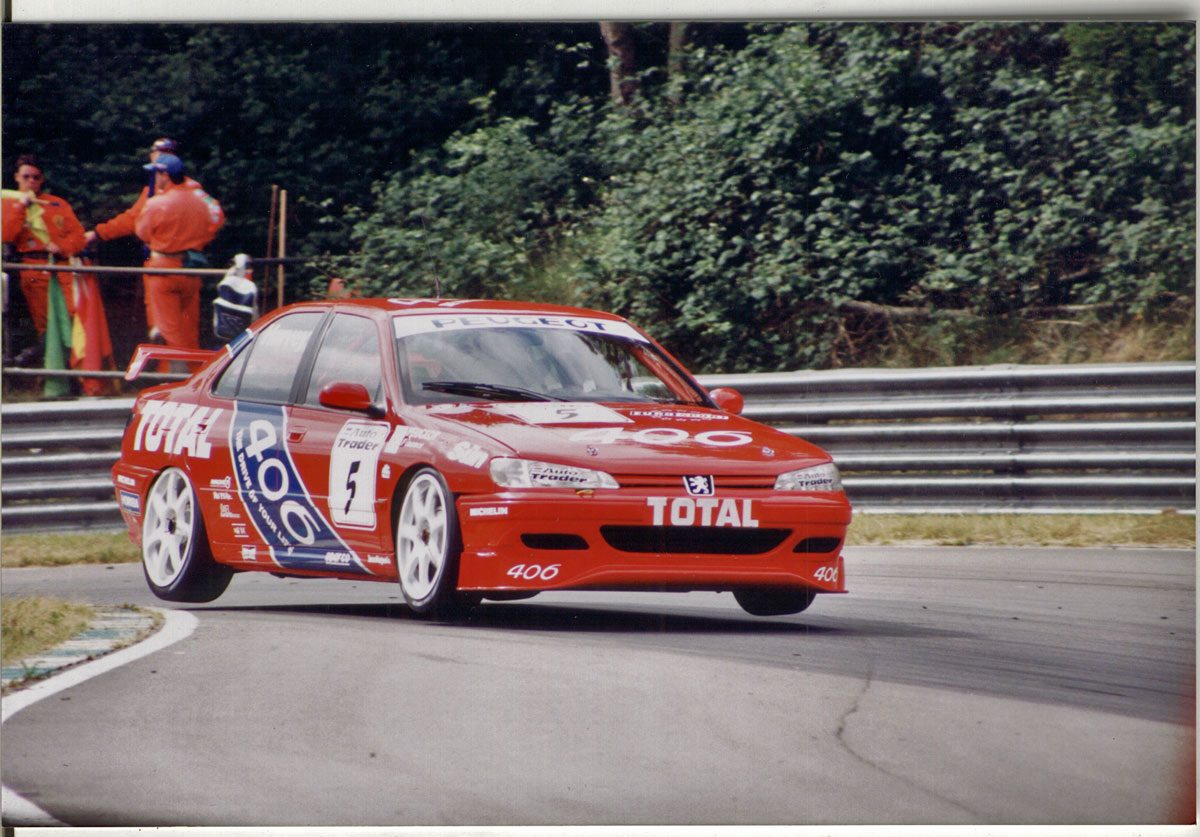
Also new for 1996 was Tim Harvery, signed to partner Patrick Watts. Harvey was well known at this time as a brilliant development driver, able to help struggling teams move up the field. He had done it with BMW in 1991, culminating in them winning the title together in 1992; he did it with Renault, driving for them in 1993 and 1994, winning races and proving the Laguna to be the car it would go on to be; he did it with Volvo, driving for them in 1995, leading the championship early on and going some way to enabling TWR to become a top touring car team once again in a very competitive season with Rickard Rydell. Given that he had done so with three other manufacturers who had reaped the benefits, there was no reason why he couldn't do it with Peugeot. It seemed the Total package (pun
definitely intended).
But 1996 was a disaster. Harvey finished 4th at Snetterton but that aside neither driver finished better than 8th and Harvey's 20 points and Watts' 6 points was a pauper's challenge on the championship. Harvey and Watts both struggled to get the best out of the new car; Tim Harvey set the ignominious record of 6 consecutive DNFs, which I believe is still a BTCC record, and Patrick Watts actually had
10 consecutive non-classified finishes; 4 DNFs, then a DNS, another DNF, then another DNS, and then 4
more DNFs.
In 1997 MSD (Motorsport Developments) came in to run the team but Mick Linford was still team manager as head of Peugeot Sport UK. And with this came arguably the Peugeot BTCC contender most people remember:
Note: This is the 1998 car but it's the best quality picture of this machine
The green and gold Esso Ultron Peugeot. Unquestionably one of the best
looking BTCC supertourers but looks don't always mean success and 1997, although an unquestionable improvement on 1996, was another struggle against the more successful, better funded teams. Watts was the last-placed works driver in the championship with a 26 point haul which coincidentally was the sum total the team achieved last year. Harvey did have a much better season, 66 points good enough for 9th in the championship and the first time since 1994 that a Peugeot driver had finished in the single digits of championship placings.
Whilst Alain Menu crushed the opposition and dominated the championship, a rare bright spark for Peugeot is that drive of the season is quite possibly the one Tim Harvey gave at Thruxton. Rain fell, and Harvey pitted for wet weather tyres behind the safety car. He found himself way down the field in 17th position but Harvey, a noted wet weather specialist, danced around the notoriously tricky circuit with such ease and guile that he was anywhere between 3-5 seconds faster than anyone else on the track. He simply marched through the field, overtaking the cautious and lapping those who span off. When it came down to it, he finished less than a second behind race winner Gabriele Tarquini and had the race been one, maybe two laps longer, he would have unquestionably won the race.
It's a fantastic race and well worth a watch.
Harvey's wet-weather exploits were a true highlight of the 1997 season
Elsewhere? Laurent Aiello won the 1997 German Supertourenwagen Championship in a Peugeot 406. Once again, the British challenge was the lesser funded, worse performing of Peugeot's porfolio.
1998 would be Peugeot's final year. Tim Harvey was joined by Paul Radisich and the green & gold continued to win over fans but Peugeot's budget was not enough and the car was simply not competitive enough. Radisich was the more competitive of the two, finishing 4th at Silverstone, 6th at Knockhill and again at Silverstone, and even briefly led at Oulton Park thanks to pit stops, but both drivers finished even behind some of the independents in the driver's championship.
Peugeot was once again last in the manufacturer's championship and along with Audi, declined to submit an entry for 1999 due to a lack of competitiveness and costs spiralling out of control.
So what went wrong? And why?
Finance. Despite a dedicated, hard-working crew Peugeot never had the budget that any of the top teams like Williams Renault, TWR, AC Schnitzer or Alfa Corse had for their factory exploits. This didn't affect just Peugeot as shown that in 2000 there were only three teams left and a car cost around £1,000,000 a year to race but those costs increased as the seasons went on and Peugeot headquarters never stumped up that kind of cash.
But there is a caveat to that. As mentioned, Peugeot was far more competitive in other series than it was in Britain, both with the 405 and 406. Rumour has it that the British Peugeots ran a different aerodynamic package than their continental cousins and this hampered them significantly for the entire seven-season tenure Peugeot had in the BTCC. Ostensibly Peugeot Sport HQ apparently did not want whoever was running the British outfit to have knowledge of their advanced 405 and 406 packages, lest they quit running the team and take that information to other BTCC rivals.
This seems extremely unusual given that it was in Peugeot's best interests to succeed in the BTCC and to hamper their own effort is illogical but whereas the BTCC outfit was run by MSD and other 'external' personnel, the French, German and Italian teams were run under the more direct control of Peugeot Talbot.
The evolution of what a touring car team was changed during their tenure; of those teams I mentioned at the start in 1991/92, Janspeed, DC Racing, VLM, Rousesport, not one of them lasted as works teams by the end of the decade. Prodrive left in 1992 and came back later on but the 'old guard' touring car teams were gradually supplanted by better-funded teams with experience from F1 like Williams or TWR and budgets to poach top international stars such as Gabriele Tarquini, Frank Biela, Jo Winkelhock and Laurent Aiello. Peugeot lost ground to those teams, couldn't hire those drivers and quite simply could not keep up.
You will also notice that I have failed to mention any wins for Peugeot in the BTCC. This is the crux of this article; despite being extremely well remembered for their presentable cars and named talents like Radisich, Harvey and Gravett, Peugeot remain the only full-fledged, two-car works team to not win a race during the supertouring era.
A failure, yes, but unlike a lot of the other things I have written about for this thread, this failure is at least a popularly-remembered underdog.

